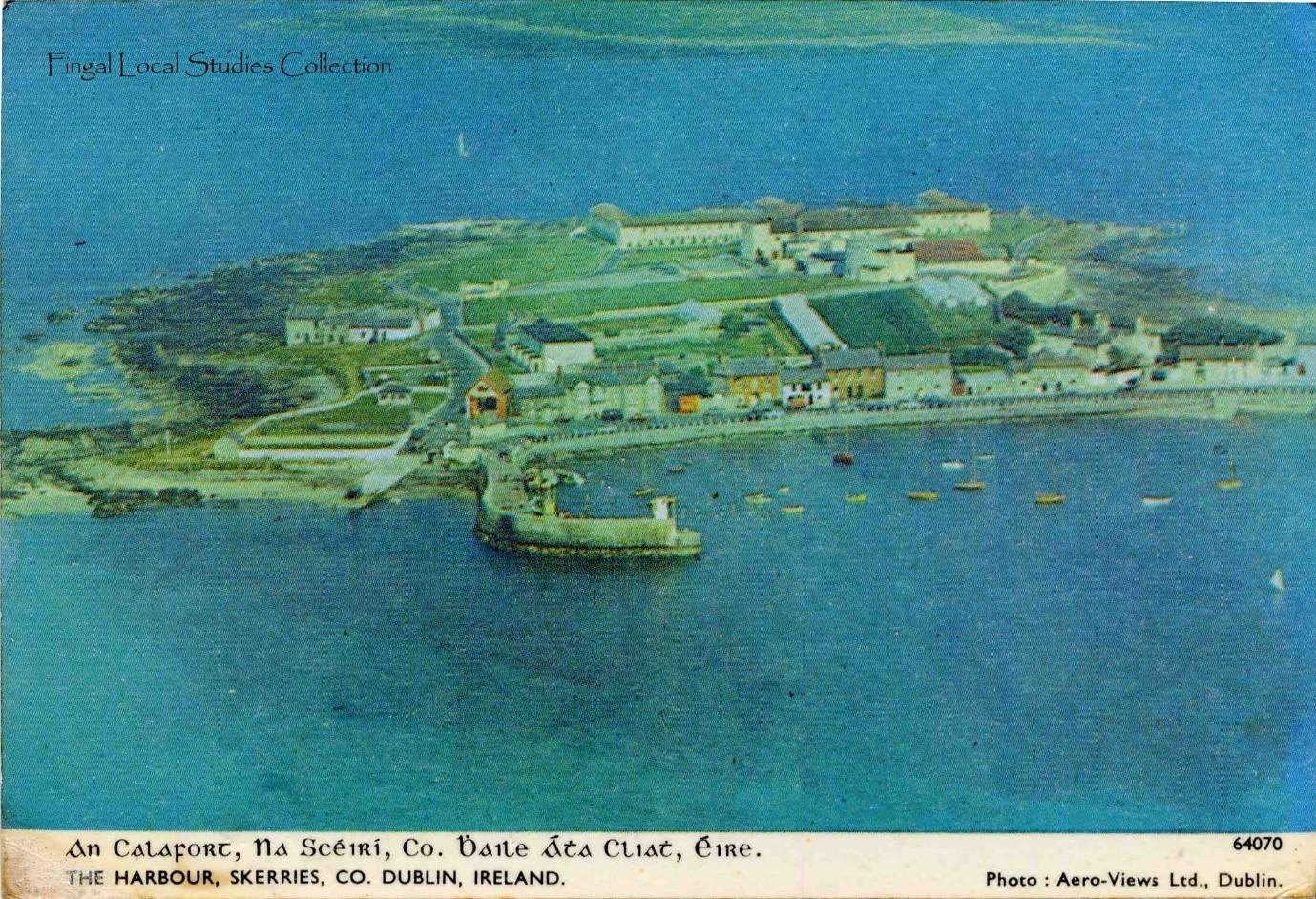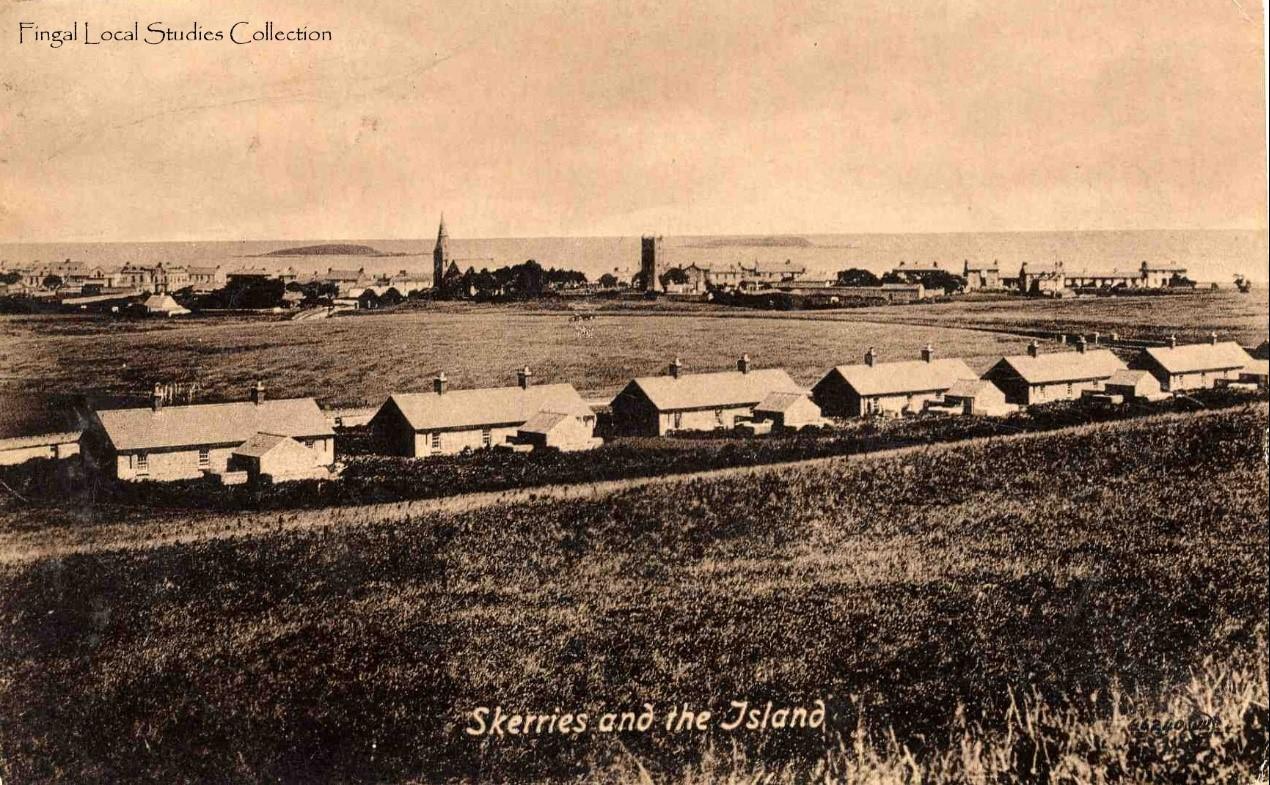St. Patrick in Skerries

We are kick starting our new blog series ‘Fingal Folktales’ with a St. Patrick’s week special exploring some local stories about the saint. There is a rich vein of folklore connecting St. Patrick to Skerries with the island Inis Patrick being named for him. The most well-known local tale goes:
St. Patrick lived on an island off the coast of Skerries where he had built a church. He lived there with his one companion, a goat! However, one night people from Skerries went to the island and ate his goat. When St. Patrick asked them if they had seen the goat, they found themselves unable to speak and instead could only bleat ‘’ma, ma’’. This unwilling confession is how St. Patrick discovered their guilt. In anger he stepped from the island onto the mainland leaving a giant footprint which can still be seen today (in some versions of the story the footprint is to be found on Red Island).
History Behind the Legend
St Patrick is a legendary figure today, famous for deeds such as driving the snakes out of Ireland and using a shamrock to illustrate the holy trinity to a pagan king. But who was Patrick really? Our earliest sources about St. Patrick come from medieval biographies written centuries after his death. Scholarship tells us Patrick (born Maewyn Succat) was an early medieval Christian living in west Britain who was captured and enslaved by Irish raiders. It is thought he was made to work as an animal herd for several years in Northern Ireland where he learned Gaelic. He later escaped and travelled to Gaul (modern France) where he studied in a monastery. After returning to Ireland, he gained fame for the missionary work he did there, and it is from this work that the stories of snakes and shamrocks spring. He was supposed to have died in 461 AD on March 17th which is why we celebrate him annually on this date.
Local scholarship tells that upon his return to Ireland, Patrick was driven out of Wicklow and forced to sail up the east coast of Ireland eventually landing at Inis Patrick. But did St. Patrick ever really go to Skerries? The archaeological record it tells us that a monastery was established on Inis Patrick which Vikings raided in 798 AD. In 1120 AD another monastery (of St. Augustine) was established on the island which was in turn replaced in the 1220s by a new church on the Holmpatrick on the mainland. So, all we can say for sure at the moment is that there is a long monastic tradition coupled with a strong folkloric tradition about the saint at Skerries. So strong in fact, that a local café in Skerries has named itself ‘the Goat in the Boat’ after the story of St. Patrick and his goat!

Want to Delve Deeper?
Why not explore local stories about St. Patrick in your area on Dúchas.ie? Or if you feel like telling some of your own stories and memories of your local area visit KnowYour5K to contribute. Finally, if you have never been to Skerries or are unable to visit due to travel restrictions please enjoy this video about Skerries and its islands prepared by the Fingal heritage office.
Happy St. Patrick’s Day!
- Aoife Walshe
Bibliography
Archer, Patrick (1975), Fair Fingall, ed. Browne, Bob; Duffy, Jarlath.
Baker, Christine (2015), ‘’Where are Fingal’s Vikings?’’, Fingal Studies: Local History Journal of Fingal County Libraries, No. 4, pp. 3-8.
Flinn, F. K. (2016), Encyclopaedia of World Religions: Encyclopaedia of Catholicism, accessed through www.credoreference.com on 03/03/2021
Muirchú, Life of Patrick, trans. Bieler, Ludwig, (1979), accessed through celt.ucc.ie on 03/03/2021.
On the Life of St. Patrick, trans. Stokes, Whitley, accessed through celt.ucc.ie on 03/03/2021.
Scantlebury, Rev. C.S. (1960), ‘A tale of two islands (Dalkey Island and Inis Padraig)’, Dublin Historical Record, Vol 15, pp. 122-8.
Schools Manuscript Collection, The National Folklore Collection, accessed through Dúchas.ie.
The Legend of St. Patrick’s Footprint, Skerries Historical Society accessed through https://oldskerries.ie/ on 26/02/2021.